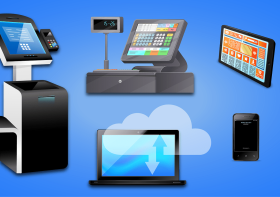A Review of Popular IoT Communication Protocols

Information movement from people to people, people to things, and things to things is projected to undergo a revolution thanks to the Internet of Things (IoT) Information Communication Technology (ICT). Connected, information-transferring and decision-making capabilities exist in intelligent gadgets. It is known as “connectivity for anything” and this innovative technology. Anywhere, anytime, and anything can be connected.
The IoT environment includes a staggering amount of clever technology but several limitations. Some of these restrictions include processing, storage space, limited power life, and limited radio range. Consequently, IoT putting into action calls for communication protocols that can effectively handle these circumstances.
How Do IoT Devices Interact With One Another?
A collection of guidelines known as a communication protocol facilitates safe data transfer between computers, servers, and other storage and processing equipment.
Each IoT platform communication protocol has unique properties that make it useful for some projects and useless for others. The range, memory requirement, power consumption, installation expenses, etc., of protocols, vary greatly. Some can merely communicate across physical barriers, while others can connect devices across multiple buildings. For instance, Bluetooth, a popular IoT communication technology in smart homes, fitness equipment, and healthcare, requires little power and memory, but its connection range is constrained.
Not all protocols function correctly or function in all situations, as Bill Ray, Senior Research Director at Gartner, put it.
IoT communication protocols offer the following connections:
- Between devices.
- Gadget to the gateway.
- Connect the device to a data center or the cloud.
The graphic below shows that IoT solutions are constructed as a stack of technologies with various layers. As a result, communication protocols work at multiple tiers. The Bluetooth protocol, for instance, operates at the lowest layers, but the Data Distribution Service (DDS) protocol uses the highest level or the application tier.
Classification of IoT Communication Protocols
The division of IoT communication protocols into data and network protocols—is one of the most used methods.
- Higher layers of data protocol operation include application and presentation.
- Network protocols operate in data links, transport, and physical layers.
Data Protocols
IoT Platform data protocols connect low-power IoT platforms and offer point-to-point communication directly in offline mode with the hardware. A wired or mobile network is used to establish connectivity.
- Advanced Message queuing Protocols
Independent of the platform being utilized, this open standard application layer protocol provides messaging across systems. It can ensure compatibility amongst customers of various vendors. Even when one of the systems is temporarily offline, or the networks are unreliable, AMQP maintains secure and dependable communication
- Message Queuing Telemetry Transport
A simple IoT communication protocol, this. MQTT is appropriate for wireless systems with limited bandwidth and high latency, such as mobile devices using an unstable network. It uses TCP/IP networks as its foundation and offers a dependable connection. Facebook employed it for its online discussions because of this.
- Constrained Applications Protocol
The Internet Engineering Task Force created this IoT communication protocol to meet the needs of HTTP-based systems. Even though the internet is available to everyone, it is too slow for many IoT solutions. As a result, the IoT community tends to dismiss HTTP as unsuitable for IoT solutions. Because it allows for short wake-up and long sleep states, CoAP can work with HTTP without causing overheard.
- Data Distribution Service
This IoT communication protocol for real-time systems was created by the Object Management Group (OMG). DDS uses a publish-subscribe pattern to provide a dependable and scalable data exchange. The fact that DDS supports the dynamic discovery of publishers and subscribers contributes to its scalability.
Network Protocols
IoT network communication protocols allow medium and high-power IoT devices to communicate over a network. This technology is typically used in conjunction with the internet.
There are various methods for connecting IoT devices, including point-to-point, star networks, and mesh topology:
- Point-to-point deployments connect two nodes directly, forming a close network. This network’s data does not travel on the public internet, making this connection extremely secure.
- All nodes in a star network are linked to a gateway, which collects and transmits data for further processing and storage. Because devices are allowed to rest in between transmissions, this method uses little energy. However, if a node cannot connect to the gateway, it cannot send data.
- Mesh networks are more dependable because other nodes can receive data from their neighbors and forward it to the gateway. As a result, a node’s functionality is not limited by its ability to access the gateway directly. This network type can cover greater distances than star networks and can self-heal by recalculating data transmission routes in the event of a node failure.
Conclusion
The Internet of Things (IoT) is an application of Information Communication Technology (ICT) that allows devices to communicate with one another. Each IoT communication protocol has distinct properties that make it useful for some projects while rendering it useless for others. Some can only share across physical barriers, whereas others can connect devices across multiple buildings.
You can also use akenza.io, a self-service IoT platform that lets you build useful Azure IoT Hub products and services. Akenza.io is confident in its ability to help organizations develop IoT solutions by considerably reducing the workload and complexity.



